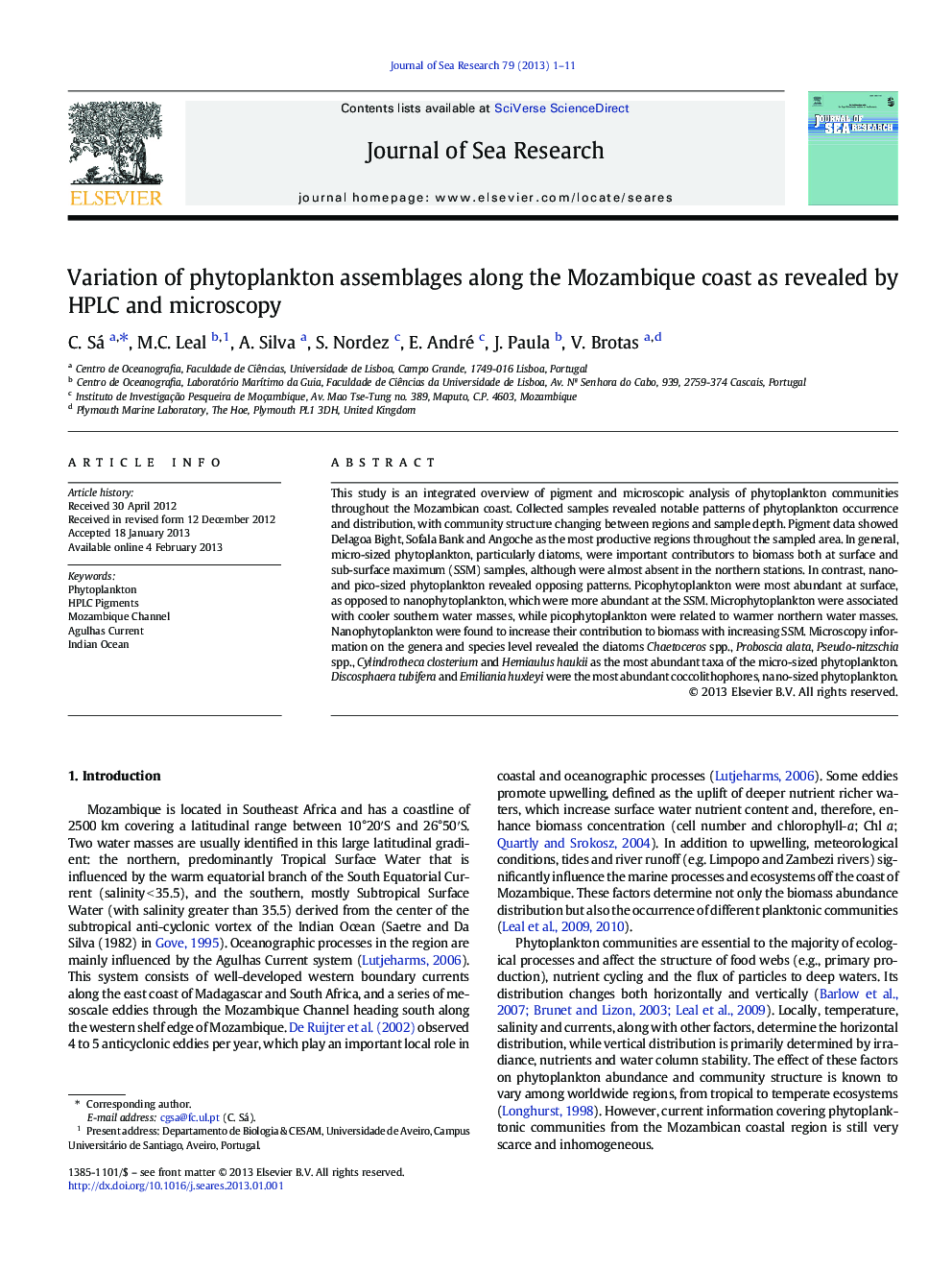| Article ID | Journal | Published Year | Pages | File Type |
|---|---|---|---|---|
| 4549939 | Journal of Sea Research | 2013 | 11 Pages |
This study is an integrated overview of pigment and microscopic analysis of phytoplankton communities throughout the Mozambican coast. Collected samples revealed notable patterns of phytoplankton occurrence and distribution, with community structure changing between regions and sample depth. Pigment data showed Delagoa Bight, Sofala Bank and Angoche as the most productive regions throughout the sampled area. In general, micro-sized phytoplankton, particularly diatoms, were important contributors to biomass both at surface and sub-surface maximum (SSM) samples, although were almost absent in the northern stations. In contrast, nano- and pico-sized phytoplankton revealed opposing patterns. Picophytoplankton were most abundant at surface, as opposed to nanophytoplankton, which were more abundant at the SSM. Microphytoplankton were associated with cooler southern water masses, while picophytoplankton were related to warmer northern water masses. Nanophytoplankton were found to increase their contribution to biomass with increasing SSM. Microscopy information on the genera and species level revealed the diatoms Chaetoceros spp., Proboscia alata, Pseudo-nitzschia spp., Cylindrotheca closterium and Hemiaulus haukii as the most abundant taxa of the micro-sized phytoplankton. Discosphaera tubifera and Emiliania huxleyi were the most abundant coccolithophores, nano-sized phytoplankton.
► Phytoplankton communities along the Mozambique coast ► Spatial hydrological and biological changes ► Phytoplankton indices compared and discussed with microscopy ► List of genera/species identified in the region
